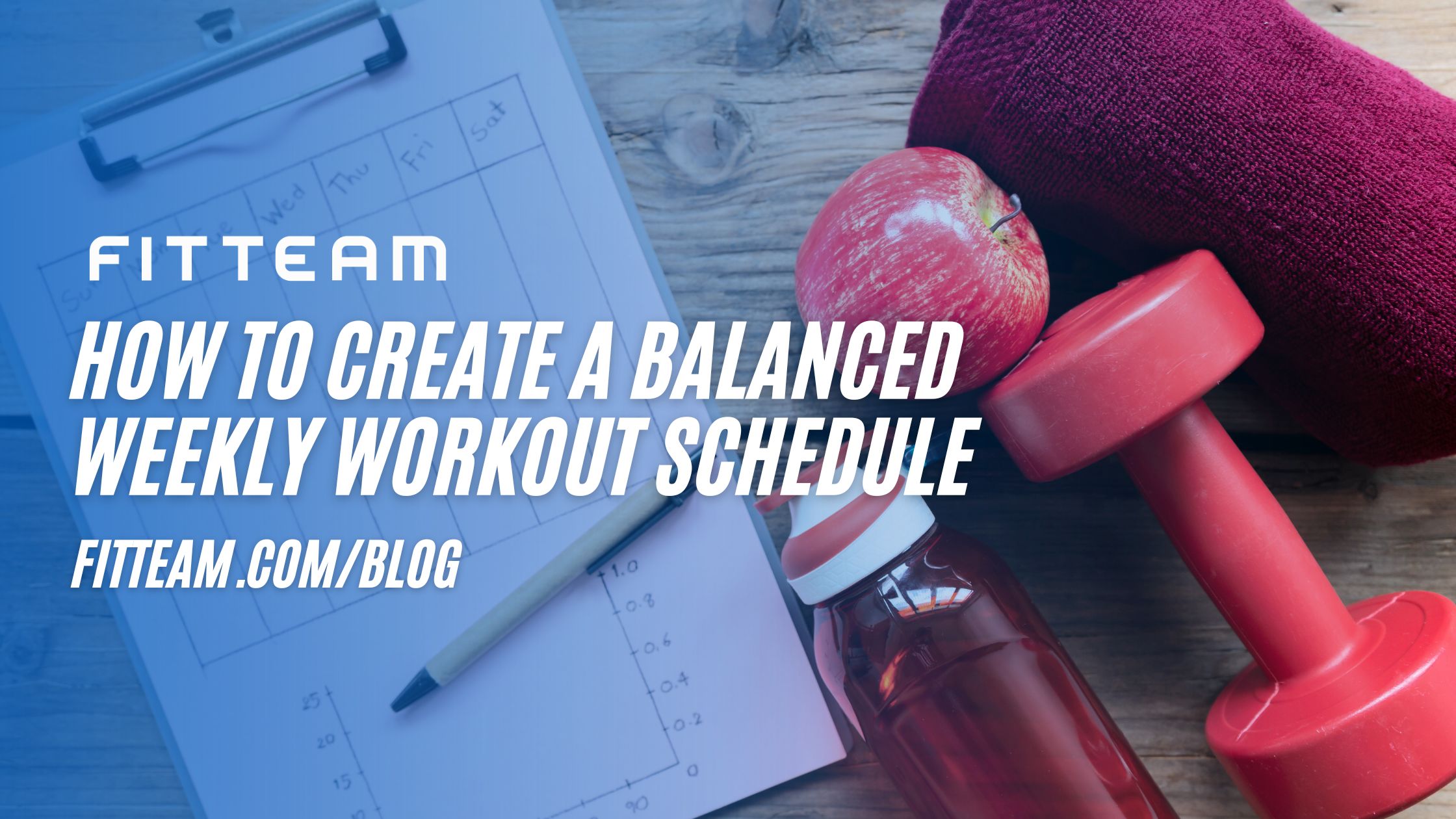
19 Aug How to Create a Balanced Weekly Workout Schedule
How to Create a Balanced Weekly Workout Schedule
Creating a balanced weekly workout schedule is crucial for achieving your fitness goals, whether you’re looking to build strength, improve cardiovascular health, or enhance overall well-being. A well-rounded workout plan ensures that you’re targeting all major muscle groups, preventing overuse injuries, and allowing adequate time for recovery. Here’s a guide to help you create a balanced weekly workout schedule tailored to your needs.
1. Understand Your Goals
Before you start designing your workout schedule, it’s essential to clarify your fitness goals. Are you aiming to lose weight, build muscle, increase endurance, or simply maintain your current fitness level? Your goals will dictate the types of exercises and the intensity of your workouts.
- Weight Loss: Focus on a combination of cardio and strength training to burn calories and build muscle.
- Muscle Building: Prioritize strength training with heavier weights and lower reps.
- Endurance: Incorporate longer cardio sessions and circuit training.
- General Fitness: A mix of cardio, strength, flexibility, and balance exercises is ideal.
2. Plan Your Weekly Workout Routine
A balanced weekly workout schedule typically includes a mix of strength training, cardiovascular exercise, flexibility work, and rest. Here’s a sample breakdown:
- Day 1: Strength Training (Upper Body)
Focus on major muscle groups in the upper body, including the chest, back, shoulders, and arms. Exercises could include bench presses, rows, shoulder presses, and bicep curls. - Day 2: Cardio (HIIT or Steady-State)
Engage in high-intensity interval training (HIIT) or steady-state cardio like running, cycling, or swimming. HIIT workouts are time-efficient and great for burning calories, while steady-state cardio helps build endurance. - Day 3: Strength Training (Lower Body)
Work on the lower body, targeting the legs, glutes, and core. Exercises might include squats, lunges, deadlifts, and planks. - Day 4: Active Recovery (Yoga or Light Cardio)
Incorporate a low-impact activity such as yoga, stretching, or a light walk to promote recovery while keeping the body active. - Day 5: Strength Training (Full Body or Functional Movements)
Combine upper and lower body exercises or focus on functional movements that mimic everyday activities, such as kettlebell swings or compound lifts like deadlifts. - Day 6: Cardio (Endurance or HIIT)
Engage in another cardio session, possibly with a different mode of exercise than earlier in the week. Varying your cardio helps prevent boredom and overuse injuries. - Day 7: Rest or Light Activity
Rest is crucial for muscle recovery and preventing burnout. You can also opt for a light activity, like a leisurely walk or stretching session, to stay active without overexerting yourself.
3. Balance Intensity and Volume
It’s important to strike a balance between workout intensity and volume. Overtraining can lead to injury, fatigue, and burnout. Listen to your body, and adjust your schedule if you feel overly fatigued or sore.
- Intensity: Ensure that your workout sessions are challenging enough to promote progress, but not so intense that you risk injury.
- Volume: This refers to the total amount of work you do during a workout (e.g., sets and reps in strength training). Adjust the volume based on your fitness level and recovery ability.
4. Incorporate Flexibility and Mobility Work
Flexibility and mobility are often overlooked but are essential for a balanced workout routine. Incorporating stretching, yoga, or dedicated mobility exercises helps improve range of motion, reduces the risk of injury, and enhances overall performance.
- Dynamic Stretching: Perform dynamic stretches before workouts to prepare your muscles for activity.
- Static Stretching: Use static stretches after workouts to help with recovery and maintain flexibility.
- Mobility Exercises: Focus on improving joint mobility, especially in areas prone to stiffness like hips and shoulders.
5. Schedule Rest and Recovery
Rest days are just as important as workout days. They allow your muscles to repair and grow stronger. Without adequate rest, you risk overtraining, which can lead to injuries and setbacks in your fitness journey.
- Active Recovery: Engage in low-intensity activities like walking, swimming, or yoga on rest days to promote circulation and aid in muscle recovery.
- Sleep: Prioritize getting 7-9 hours of sleep per night to support recovery and overall health.
6. Monitor and Adjust Your Plan
Regularly assess your progress and adjust your workout schedule as needed. If you find certain workouts too easy or too difficult, modify the intensity, duration, or type of exercise. Listening to your body is key to staying on track and avoiding plateaus.
- Progress Tracking: Keep a workout log to track your exercises, sets, reps, and how you feel after each session. This helps in making informed adjustments.
- Periodization: Consider periodizing your training, where you cycle through phases of varying intensity and volume. This strategy can prevent burnout and keep your workouts effective over the long term.
Conclusion
A balanced weekly workout schedule is a blueprint for achieving your fitness goals while maintaining overall health and well-being. By incorporating a mix of strength training, cardio, flexibility work, and rest, you can create a routine that’s sustainable, effective, and enjoyable. Remember, consistency is key—stick to your plan, and you’ll see progress over time.
Sources
- www.healthline.com/nutrition/creating-a-balanced-workout-schedule
- www.acefitness.org/resources/pros/expert-articles/6335/7-steps-to-create-a-weekly-workout-schedule
- www.mayoclinic.org/healthy-lifestyle/fitness/in-depth/exercise/art-20048389
- www.verywellfit.com/how-to-create-a-balanced-workout-schedule-5186709

